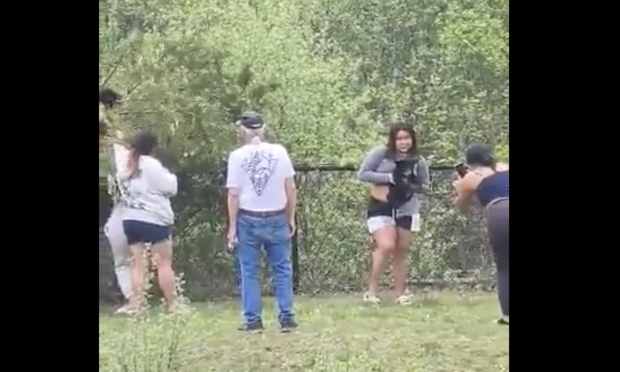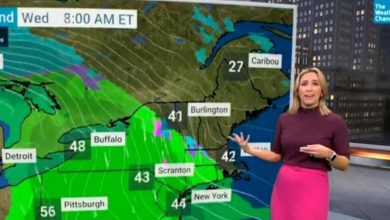
Orphaned bear cub doing well two weeks after birth taken from a tree by a group of people apparently seeking to take photos with her, an animal rescue service said Tuesday.
She was taken in by the Appalachian Wildlife Refuge on April 16 – the same day a viral video captured the group pulling two cubs from a tree in Asheville, North Carolina. One of the cubs was missing by the time someone from the North Carolina Wildlife Resources Commission arrived. The other, the cub currently at the shelter, was lethargic, limping and had a low body temperature, he added.
“After some time adjusting to our care, she was introduced to another orphaned cub who had arrived previously. Both cubs are thriving and doing well in our care,” said Savannah Trantham, executive director of Appalachian Wildlife Refuge. “They eat well and interact in enriching ways, doing all the things we hope to see with young cubs.”
How the little one became an orphan
It’s not unusual for baby animals to be away from their mothers in the spring and summer, Trantham said. Many mothers will leave their children in safe spaces while they forage for food. They come back when it’s time to feed their young.
“Even if we see them alone and think they must be orphaned or abandoned, in most cases they are exactly where they are supposed to be,” Trantham said.
In the April 16 video, two small bear cubs were seen perched on the branches of a tree near an Asheville apartment complex. A group of five people approached and several of them reached into the leaves to catch the bears. One person successfully shot a bear and was later seen on video holding the bear cub as if it were a small child.
Rachel Staudt / North Carolina Wildlife Resources Commission
The video also showed one of the cubs temporarily breaking free and darting out of the area around the tree where the group had gathered. The cub could be seen running towards the fence, standing up on its hind legs, briefly changing direction and trying to get over the fence again before another individual came up behind it and appeared to move to grab it.
Ashley Hobbs, a special projects biologist with the North Carolina Wildlife Resources Commission who responded to the scene, previously told CBS News in a statement that she arrived to find the group of people still there. Only one of the two cubs was still there and he was sitting in a retention pond on the apartment complex property. The calf was then taken to the Appalachian Wildlife Refuge Center, a rehabilitation center in nearby Candler.
“This case has understandably sparked feelings of frustration, sadness and anger among many viewers, and we hope that witnessing these shocking images will inspire people to think about the very real challenges facing wildlife every day,” Trantham said.
Wildlife Resources Commission officers investigated the incident with the cubs. Those involved were all warned about the importance of leaving the cubs alone.
“It is illegal in North Carolina to capture and keep black bears. However, the cubs were immediately released and officers determined that no charges would be filed,” a commission spokesperson told Reuters on Wednesday. CBS News.
Taking care of the little one
The Appalachian Wildlife Refuge has rehabilitated dozens of injured or orphaned bear cubs since 2020, it says. The cubs are cared for in natural habitats isolated from the rest of the busy facility.
Appalachian Wildlife Refuge
Caring for the cubs is expensive, Trantham said. It can cost more than $3,000 to get a single cub to reach a healthy weight.
“If we receive a healthy little orphan at a young age, we easily see a food bill of $2,000 to $3,000 with the specialized formula, dry food, fresh produce and whole prey they receive in their varied diet,” Trantham said. “In total, we spend between $20,000 and $30,000 per season on the cubs we raise, from food and medical costs to habitat maintenance and enrichment.”
The Appalachian Wildlife Refuge is closed to the public to limit human interaction with the animals. A small team works with the cubs so they can stay as wild as possible while still being rehabilitated. The refuge team expects the cubs to be released as wild bears in the fall.
“We always want to see all wild animals left in the wild and raised by their mothers, but we work hard every day to provide a place for these wild animals to go to those who truly need our intervention,” Trantham said.
Emily Mae Czachor contributed reporting.
Grub5







